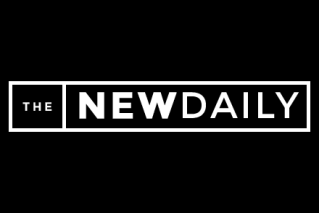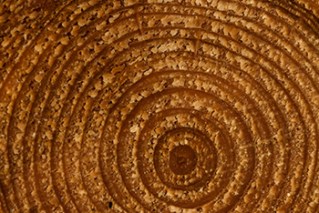With the Australian housing market among the most expensive in the world, it’s no wonder young people and those on low incomes risk missing out on home ownership.
The Adelaide Bank and Real Institute of Australia housing affordability report, released in March, showed the number of first-home buyers is the lowest since the Australian Bureau of Statistics started to collect data. And for those who can afford one, nearly a third of the median weekly family income is now required to meet home loan repayments, the research found.
… the number of first-home buyers is the lowest since the Australian Bureau of Statistics started to collect data
The fact that our nation, with its much-vaunted “great Australian dream” of a house in the suburbs on a quarter-acre block, is now a place where upcoming generations face the real possibility of a lifetime of renting is the cause much political angst, but little action. Any government move to drive down house prices – for example, through the abolition of negative gearing – has the potential to upset voters who already have one foot on the property ladder.
• The rising property trend that will save you money
• Hot property market to cool and shares to rise in 2015
There is one option for people who want to own the roof that is over their head, but can’t afford the stratospheric prices of our capital cities – take matters into your own hands.
Believe it or not, there are housing options that will leave you with spare change out of a $100,000. Sometimes, quite a lot of change.
Here are some of the best:
Housetrucks
Cost: $35,000-$45,000 for a fully fitted out housetruck, including a kitchen, bathroom, and a potbelly fireplace.
Rob Scott of Hollyburton Park builds these nifty housetrucks for customers, but his first clients were closer to home.
His family needed somewhere to live while their living room and kitchen were renovated, so Mr Scott struck upon the idea of using an old truck languishing on the farm as a prototype – and as a way of working within local council regulations.
“When I was researching a base for these things so they could be transported, I found out it was going to cost more to build a base or get a base built than it was to buy the old trucks,” said Mr Scott.
“Having the wheels meant I got around the permit. I didn’t need to get my council’s approval to have it there because it’s a transportable, not a permanent, building.
“We, as a family of five, lived in ours for three months as we renovated our living room and kitchen, and it was fantastic. It was over a winter period. It was cold and we had the potbelly going. Once you light the potbelly in there to cook on, you’re in a t-shirt with the windows open, even in the middle of winter.”
His eldest daughter now lives in one of the trucks, and the family uses another as a spare room.
“Our [modern-day] houses are so big, we’ve lost that cosy nook. As kids, we used to build cubbies and hop in them and feel cosy. Our houses don’t have that, but my studio trucks do.”
Mr Scott’s latest project is a 2.4 square metre portable room, which has an L-shaped couch built in, with a desk, shelves, and a loft, which he said would be “great for a student or guest.”

The truck house is a cheap – and transportable – dwellling. Source: Supplied
Earthbagging
Cost: From $40,000 for a basic, two-bedroom, 80 square metre earthbagged home built by the owner.
Earthbagging is a cheap construction method using sacks of clay soil, gravel or some other easily obtained material stacked in a pattern similar to bricklaying. The end result often looks like a clay igloo – or even a Hobbit hole.
Nicholas Jouin and Minna Seppala at Permastructure, a Melbourne-based venture, teach “intensive workshops” to help others build their own earthbagged structures.
“This method is only 25 years old, and is getting popular around the word and is very new in Australia,” said Mr Jouin.
“We build for people from retaining walls to domes to any structure you want.”

Earthbagged houses look like something from Middle Earth. Source: Supplied
Pre-fab pods
Cost: $50,000-$70,000 for a single self-contained Garden Studio pod, including veranda, kitchen, work space, lounge area, ensuite bathroom and sleeping area.
These revolutionary pre-fab pods are built by Queensland company Buildfirst, owned by the Emblin family.
The pods, with their concrete slab flooring and concrete-filled wall system, are marketed as resistant to cyclones, vermin, termites, rust and rot – all at a reasonable price.
Managing director of Buildfirst, Jono Emblin, said the company is “seeing demand take off” for these single self-contained pods for private use.
These pods can stand alone, be stacked on top of each other, or slotted inside a larger frame to speed up the build time for a family home.
“Modular Studios and small homes are increasingly in fashion as architects get on board and create lifestyle spaces that help finally shake the ‘kit home’ misconception of modern modular structure,” said Mr Emblin.
The low price of these pods is due to their quick construction on an assembly line, in much the same way as cars. In fact, the Emblin family takes inspiration from the principles used by Toyota to keep costs down.
“It’s easy to understand how well-designed small and efficient spaces drastically reduce the energy footprint especially compared to McMansions for just two people,” said Mr Emblin.

A cross-section of a pod. Source: Supplied
Geodesic domes
Cost: From $46,000 for a full-sized geo dome house.
Geo domes are constructed from a patchwork of intersecting wooden triangular pieces that come together to form a strong, versatile and eccentric living space that can be assembled quickly and cheaply.
Robbie Lusher of The Dome Company has been designing and building these domes for over 40 years.
He was contracted by Tim Waldon, a massage therapist, to create an ecologically-friendly dome as a second storey for his house.
The photo is of Mr Waldon’s finished home in Daylesford, Victoria. The dome, which rests on top, is built from plywood and measures 12.3 metres in diameter.
Mr Waldon said domes are “an extremely efficient and affordable” way to build.
“Not only is it one of the strongest structures – cyclone, tornado and earthquake proof – but it uses 20 per cent less materials to build, saves 50 per cent on energy usage, and gets you ‘out of the box’ with 7.5 metre high cathedral ceilings.”
Mr Lusher confirmed that the domes are “very affordable” to build, although he declined to give an exact figure.
“Tim’s creation included the platform and rooms underneath, but the dome itself is very cost effective,” said Mr Lusher.
While Mr Lusher no longer sells these wooden structures, he says he can “provide owner-builders with plans and ideas on how to do it”.

Source: Full-size geo dome houses are built on the same principle as this meditation space. Source: Supplied
Kit homes:
Cost: From $46,600 for a two-storey cabin with two bedrooms and a laundry.
Missing Link Cabins and Cottages is a family owned business operated from Southern Tasmania that specialises in the design of compact, semi-prefabricated, steel-framed kit homes.
The entertainer cabin, for example, has an open-plan at ground level, with a first floor that can either be one open space or two bedrooms. It includes a laundry, storage space and an overhang allowing for car parking with a rear entry to the building.

The entertainer kit home can be purchased for less than $50,000
Beware the hidden costs
Ash Thomas, manager of Missing Link Kit Homes, explained that even his competitively-priced small cabins and granny flats can soar in cost once additional fees and charges are included.
In rural areas, Mr Thomas said that some homebuilders face the costs of waste water management plans, bushfire management assessments, other local council requirements, and “tricky” power and sewage connections.
“I personally believe it’s very hard to build inexpensively these days,” he said.
“Even before you start, you’re looking at a small fortune in fees and charges. And if you think you can scrape it in by doing a lot of the work yourself as a ‘owner builder’ then the banks aren’t too interested [in lending you money].”








